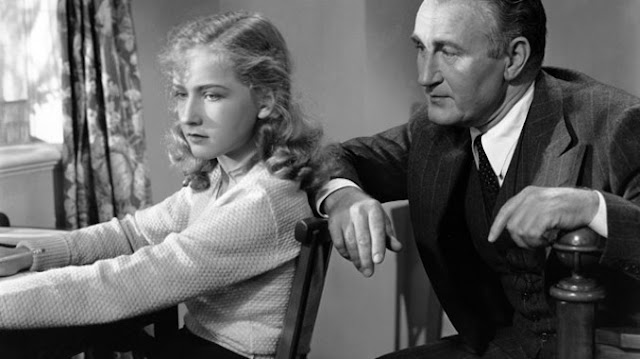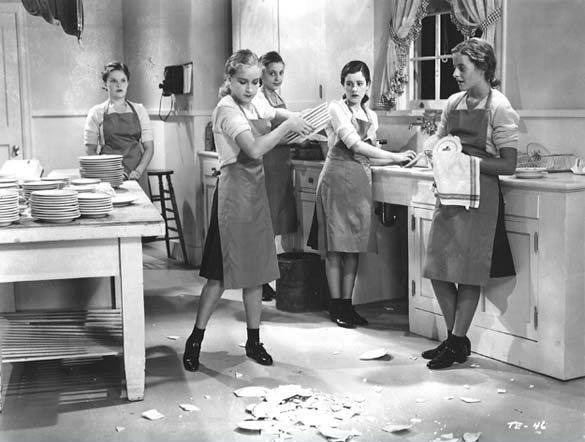Prisoners of war are interrogated and tortured for their secrets. But what happens when they're tricked out of them?
Directed and adapted for the screen by George Seaton, 36 Hours (1965) is a fascinating WWII film about a major in the US Navy whose drugged and captured by the Germans. When he comes to he's made to believe that it's 6 years later and the war is over opening up the opportunity for the Germans to learn crucial information about the imminent invasion of Normandy, also known as D-Day.
James Garner stars as Major Jefferson Pike. The US Navy has sent him to Lisbon, Portugal on an intelligence mission. However before he's able to execute his assignment, a German spy slips something into his coffee which knocks him out and he's taken prisoner. While he's unconscious a team of Nazis work to execute an elaborate plan that's been months in the making. Led by psychiatrist Major Walter Gerber (Rod Taylor), the team has studied Pike for months. Their plan is to make him think it's 1950 and he's recovering in an American Navy hospital. He's recruited fellow Germans who speak impeccable English to play Americans. Also part of his team is Anna Hedler (Eva Marie Saint), a concentration camp victim who spoke good English, was a trained nurse and saw this as an opportunity out of her situation. Anna plays his wife and nurse and Gerber plays a sympathetic American major and psychiatrist. A team of doctors perform plastic surgery on Pike to make him look like he's aged by 6 years. Gerber gets word from his higher ups that he only has 36 hours to finish his project and get important battle details out of Pike. His superior Otto Schack (Werner Peters) is visiting and anxious to interrogate the prisoner all the while doubting Gerber's plan. Will Pike figure out what's going on before he reveals too much?
 |
| Rod Taylor, James Garner and Eva Marie Saint in 36 Hours (1965) |
36 Hours is based on an original story by writers Luis Vance and Carl K. Hittleman. However, Roald Dahl, popular writer and WWII veteran, had written a story in 1944 called Beware of the Dog that was very similar to Vance and Hittleman's story. Dahl's wife actress Patricia Neal was considering the part of Anna and noticed the similarities. In order to avoid a lawsuit, MGM bought the rights to Dahl's story and he received credit. Roald Dahl's biographer Jeremy Treglown confirms that Dahl was paid $30k for the film rights to Beware of the Dog. Most sources say the movie was adapted from Dahl's story but his is quite different. The two stories share in common the concept of tricking someone into think they are in a different place and time. I couldn't find any corroboration to this information other than IMDb. If you see any information please let me know because it makes for a very interesting back story!
James Garner's company Cherokee Productions co-produced 36 Hours along with William Perlberg and George Seaton. It was filmed on location in Yosemite National Park which was meant to represent the German countryside where Pike was isolated. I was delighted to see real footage of Lisbon, Portugal in the early 1960s. My father was from Portugal and I spent quite a bit of time visiting family there. At the time of filming my dad would have already been living in the US but it was still so fun to see my dad's country on film.
36 Hours is a taut war drama that kept me enthralled. I enjoyed the performances by the three leads James Garner, Eva Marie Saint and Rod Taylor. Saint's Anna is a very dark character. She's become numb because of her experiences in a concentration camp and is purely in survival mode. Saint is roughed up a bit in the movie and the plot line about her not being able to cry felt a bit over done. However I think her character was very interesting and it was great to see Saint in a role like this. Taylor's performance as Gerber was nuanced and brilliant. His character is probably the most complex of the bunch. Garner is great as Pike but I don't feel like the role was all that challenging for him. Pike is kind of a one-note character and he's confused when he comes to but I didn't quite believe it when he starts to realize what's going on. Garner is one of my favorite actors so it was still great to see him in this. And I also admire the fact that he was heavily involved behind the scenes too. I really enjoyed John Banner's performance as the Ernst. He plays an important character in the final part of the film. Describing his story line would be a major spoiler because he helps the plot come to its final conclusion.
I thoroughly enjoyed 36 Hours. I loved it's unusual story line and seeing a different take on WWII. The ending is predictable because it's based on real events but it's still so much fun to watch. Hat tip to writer Andy Ross who convinced me that I had to watch this one. You can check out his article on the movie here.
36 Hours (1965) is available on DVD-MOD and Blu-Ray from the Warner Archive Collection. It's also streaming on Warner Archive Instant. I watched the Blu-Ray version and highly recommend it.
Warner Archive Wednesday - On (random) Wednesdays, I review one title from the Warner Archive Collection. Thank you to Warner Archive for sending me a Blu-Ray copy of 36 Hours to review!



















